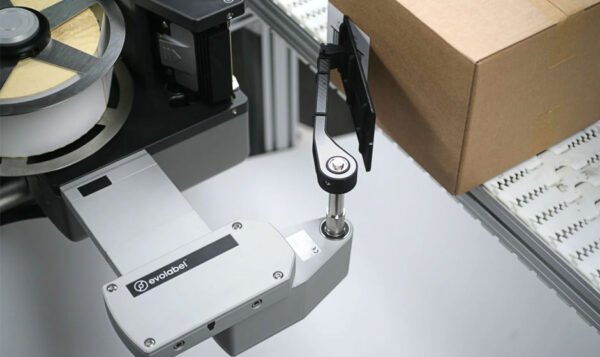The Complete Guide to Pond Treatment: Keep Your Water Crystal Clear

Key Takeaways:
- Pond water quality is essential for the health and balance of the ecosystem.
- Poor water quality can lead to algae blooms, ammonia and nitrite spikes, pH imbalance, and excess organic matter.
- Regular testing and monitoring of pond water is crucial for identifying and addressing water quality issues.
- Choosing the right pond treatment is important to effectively address specific water quality issues.
- Types of pond treatments include algaecides, beneficial bacteria, water conditioners, clarifiers, and algicide/bactericide combos.
- Factors to consider when selecting pond treatment include water volume, severity of the problem, pond inhabitants, environmental impact, and application method.
- Implementing pond treatment requires proper planning and steps like identifying the issue, selecting the appropriate treatment, calculating the dosage, applying the treatment, and monitoring the results.
- Best practices for applying pond treatments include following instructions, wearing protective equipment, applying treatments in calm weather, avoiding over-treating, and storing treatments safely.
- Common pond treatment issues include resistant algae growth, recurring water quality issues, and negative impact on fish or plants.
- Regular maintenance, such as removing debris, checking filtration system, trimming aquatic plants, and repairing leaks, is crucial for maintaining crystal clear pond water.
- Preventing water quality issues can be done by avoiding overfeeding fish, controlling nutrient buildup, using aeration, and maintaining a balanced fish population.
- To keep pond water clear in the long term, establish a regular maintenance routine, monitor water quality regularly, keep the surrounding area clean, avoid harmful chemicals, and invest in proper filtration equipment.
Understanding Pond Water Quality
Pond water quality is of utmost importance for the health and well-being of the organisms that inhabit your pond. Whether you have a small backyard pond or a larger pond on your property, maintaining crystal-clear water is essential for the overall balance and sustainability of the ecosystem.
Why is pond water quality important?
Pond water quality directly impacts the health of the fish, plants, and other organisms living in your pond. Poor water quality can lead to a range of issues, such as low oxygen levels, excessive algae growth, and the accumulation of harmful toxins. These conditions can cause stress, illness, and even death among the pond inhabitants.
Additionally, pond water quality affects the overall aesthetic appeal of your pond. Clearwater not only looks more attractive but also allows you to enjoy the beauty of the aquatic life within it.
Common issues in pond water quality
There are several common issues that can affect pond water quality:
- Algae bloom: Excessive growth of algae can result in green, murky water that reduces visibility and can deplete oxygen levels.
- Ammonia and nitrite spikes: Elevated levels of ammonia and nitrite can be toxic to fish and other organisms, leading to stress and illness.
- pH imbalance: A significant deviation from the ideal pH range can negatively impact the health of pond inhabitants.
- Excess organic matter: Leaves, debris, and decaying organic matter can accumulate in the pond, causing poor water quality and increased nutrient levels.
Testing and monitoring your pond water
Regular testing and monitoring of your pond water is crucial for identifying and addressing any water quality issues. There are various test kits available that enable you to measure important parameters such as pH, ammonia, nitrite, nitrate, and dissolved oxygen levels.
It is recommended to test your pond water at least once a month, especially during warmer months when the biological activity in the pond is higher. By regularly monitoring your pond water, you can catch any issues early on and take appropriate action to maintain optimal water quality.
Choosing the Right Pond Treatment
Choosing the right pond treatment is essential for effectively addressing water quality issues and maintaining a healthy pond ecosystem. There are various types of pond treatments available, each designed to target specific problems.
The importance of choosing the right pond treatment
Using the wrong pond treatment can have detrimental effects on your pond and its inhabitants. Some treatments may be ineffective against certain issues, while others may be too harsh and disrupt the delicate balance of the pond ecosystem.
It is essential to accurately identify the specific water quality issue you are facing before selecting a treatment. This can be done through water testing or consulting with a pond professional. Choosing the right treatment will ensure that the problem is effectively addressed without causing harm to the pond ecosystem.
Types of pond treatments available
There are various types of pond treatments available, each designed to target specific water quality issues:
- Algaecides: Algaecides are used to control excessive algae growth in the pond. They work by killing or inhibiting the growth of algae, helping to restore clarity to the water.
- Beneficial bacteria: Beneficial bacteria treatments help to break down organic matter in the pond, reducing nutrient levels and preventing the accumulation of sludge and debris.
- Water conditioners: Water conditioners are used to adjust pH levels and remove harmful chemicals such as chlorine and heavy metals from the water. They help create a stable and safe environment for pond organisms.
- Clarifiers: Clarifiers are used to improve water clarity by clumping together suspended particles, allowing them to be easily removed through filtration.
- Algicide/bactericide combos: These treatments combine the benefits of algaecides and beneficial bacteria, addressing both excessive algae growth and organic matter buildup simultaneously.
Factors to consider when selecting pond treatment
When selecting a pond treatment, it is important to consider the following factors:
- Water volume: The size of your pond will determine the amount of treatment required to effectively treat the water.
- Severity of the problem: The severity of the water quality issue will determine the strength and frequency of treatment required.
- Pond inhabitants: Some treatments may be harmful to certain types of fish or plants. Consider the compatibility of the treatment with the organisms in your pond.
- Environmental impact: It is important to choose treatments that are environmentally friendly and safe for the surrounding ecosystem.
- Application method: Different treatments require different application methods. Consider whether the treatment needs to be added directly to the water or applied through a filtration system.
Implementing Pond Treatment
Implementing pond treatment requires careful planning and adherence to proper procedures to ensure maximum effectiveness. Follow these steps to effectively treat your pond:
Step-by-step guide to using pond treatments
- Identify the water quality issue: Determine the specific water quality problem you want to address, whether it be excessive algae growth, poor water clarity, or ammonia spikes.
- Select the appropriate treatment: Based on the identified issue, choose the most suitable pond treatment to treat the problem effectively.
- Calculate the dosage: Refer to the instructions provided by the manufacturer and calculate the correct dosage based on the size of your pond.
- Remove any debris: Before the treatment, remove any visible debris, such as leaves or twigs, from the pond to optimize treatment effectiveness.
- Apply the treatment: Depending on the treatment type, apply it directly to the water or through the filtration system according to the instructions provided.
- Monitor the results: Regularly monitor the water quality parameters to track the effectiveness of the treatment. Adjust the dosage or reapply the treatment if necessary.
- Maintain proper pond care: In addition to treatment, implementing regular pond care practices such as water testing, filtration maintenance, and removing excess organic matter will help maintain optimal water quality.
Best practices for applying pond treatments
When applying pond treatments, it is important to follow these best practices:
- Read and follow the instructions provided by the manufacturer carefully.
- Wear protective clothing, gloves, and eye protection when handling pond treatments.
- Apply treatments during calm weather conditions to prevent drift and ensure even distribution.
- Avoid over-treating the pond, as this can cause imbalances in the ecosystem.
- Store treatments in a cool, dry place away from children and pets.
Troubleshooting common pond treatment issues
Despite taking necessary precautions, you may encounter issues or challenges when applying pond treatments. Here are some common problems and their solutions:
- Resistant algae growth: If the algae in your pond is resistant to treatment, consider using a different algaecide or check for underlying issues such as excessive nutrient levels.
- Recurring water quality issues: If the water quality problems persist or recur, reassess your pond care routine and consider implementing additional measures such as increased filtration or nutrient control.
- Negative impact on fish or plants: If your fish or plants show signs of stress or illness after treatment, immediately perform a water quality test and consult a pond professional for guidance.
Maintaining Crystal Clear Pond Water
In addition to implementing pond treatment, regular maintenance practices are crucial for long-term clear water success. Here are some tips to help you maintain crystal clear pond water:
Regular pond maintenance routines
Establishing a regular maintenance routine will help keep your pond clean and clear. Some important maintenance tasks include:
- Removing debris: Use a pond net to remove leaves, twigs, or any other debris that has fallen into the water.
- Checking filtration system: Regularly clean and maintain your pond’s filtration system to ensure optimal performance in removing contaminants and maintaining water clarity.
- Trimming aquatic plants: Prune and remove any overgrown or decaying aquatic plants to prevent excessive nutrient levels and improve water quality.
- Inspecting and repairing leaks: Regularly check your pond for any leaks and repair them promptly to prevent water loss and potential water quality issues.
Tips for preventing pond water issues
Prevention is key to maintaining clear pond water. Consider the following tips to prevent water quality issues:
- Avoid overfeeding fish: Excess fish food can lead to nutrient imbalances and poor water quality. Only feed your fish what they can consume within a few minutes.
- Control nutrient buildup: Minimize the accumulation of organic matter by regularly removing leaves and other debris from the pond.
- Use aeration: Installing an aeration system in your pond helps maintain oxygen levels and prevent the buildup of harmful gases.
- Maintain a balanced fish population: Overstocking your pond can lead to excessive waste production and nutrient overload. Ensure a balanced fish population based on the size and capacity of your pond.
How to keep your pond water clear long-term
To keep your pond water crystal clear in the long term, consider the following practices:
- Establish a regular maintenance routine and stick to it.
- Monitor water quality parameters regularly and address any issues promptly.
- Keep the surrounding area clean to prevent debris from entering the pond.
- Avoid the use of harmful chemicals such as pesticides or fertilizers near the pond.
- Invest in proper filtration equipment and ensure it is adequately sized for your pond.
By following these tips and implementing effective pond treatment when necessary, you can maintain crystal clear water in your pond and create a healthy and thriving aquatic ecosystem.
FAQ
FAQ 1: Why is pond water quality important? – Pond water quality is important because it directly affects the health of the fish, plants, and other organisms living in the pond. Poor water quality can lead to low oxygen levels, excessive algae growth, and the accumulation of harmful toxins, causing stress, illness, and even death among the pond inhabitants.
FAQ 2: What are the common issues in pond water quality? – Common issues in pond water quality include algae blooms, ammonia and nitrite spikes, pH imbalance, and excess organic matter. Algae blooms result in green, murky water, ammonia and nitrite spikes are toxic to fish and other organisms, pH imbalance negatively impacts pond inhabitants’ health, and excess organic matter leads to poor water quality and increased nutrient levels.
FAQ 3: How can I test and monitor my pond water? – Regular testing and monitoring of pond water is crucial for identifying and addressing water quality issues. You can use test kits to measure parameters such as pH, ammonia, nitrite, nitrate, and dissolved oxygen levels. It is recommended to test your pond water at least once a month, especially during warmer months when biological activity is higher.
FAQ 4: How do I choose the right pond treatment? – Choosing the right pond treatment is important to effectively address water quality issues. To choose the right treatment, accurately identify the specific water quality issue you are facing through testing or consulting with a professional. Each treatment type, such as algaecides, beneficial bacteria, water conditioners, clarifiers, and algicide/bactericide combos, targets specific problems.
FAQ 5: What factors should I consider when selecting pond treatment? – When selecting pond treatment, consider factors such as water volume, severity of the problem, pond inhabitants, environmental impact, and application method. The size of your pond determines the amount of treatment required, the severity of the issue determines the strength and frequency of treatment, and compatibility with pond organisms is crucial. Additionally, choose treatments that are environmentally friendly and select the appropriate application method.
FAQ 6: How do I implement pond treatment? – Implementing pond treatment requires proper planning. Follow these steps: identify the water quality issue, select the appropriate treatment, calculate the dosage based on your pond size, remove any debris before treatment, apply the treatment according to instructions, monitor the results, and maintain regular pond care practices such as water testing, filtration maintenance, and removing excess organic matter.
FAQ 7: What are the best practices for applying pond treatments? – When applying pond treatments, it’s important to read and follow the instructions provided, wear protective clothing, apply treatments during calm weather conditions, avoid over-treating the pond, and store treatments safely in a cool, dry place away from children and pets.
FAQ 8: What can I do if I encounter common pond treatment issues? – If you encounter common pond treatment issues like resistant algae growth, recurring water quality issues, or negative impacts on fish or plants, there are proactive steps you can take. Consider trying a different algaecide for resistant algae, reassess your pond care routine for recurring issues, and immediately perform a water quality test and consult a pond professional if fish or plants show signs of stress or illness.



